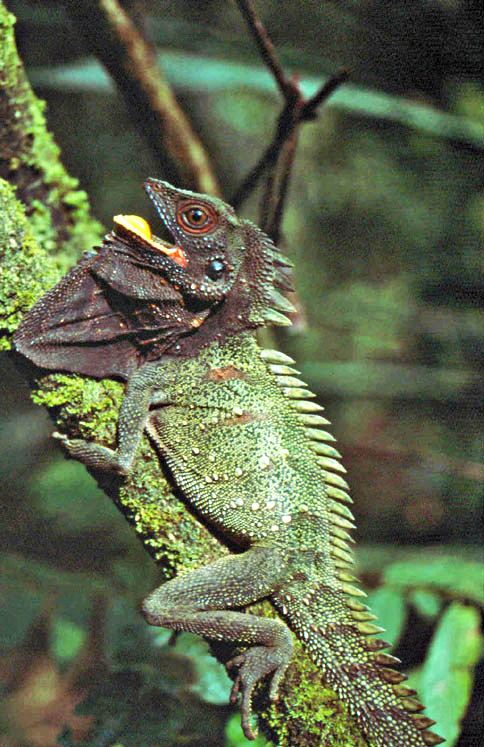Kingdom Animalia Class Reptilia Family Agamidae Phylum Chordata Rank Species | Subphylum Vertebrata Suborder Iguania Subfamily Agaminae Genus Hypsilurus Order Scaled reptiles | |
 | ||
Similar Hypsilurus, Lophosaurus spinipes, Boyd's forest dragon, Amphibolurinae, Gonocephalus | ||
The Crowned forest dragon or Indonesian forest dragon (Hypsilurus dilophus) is a large arboreal agamid lizard found in New Guinea and the Moluccan islands, Indonesia.
Contents
Etymology
The generic name Hypsilurus comes from "upsilon-tail". Upsilon ("ϒ") is the Greek letter on which the English uppercase "Y" is based. The specific name, dilophus, is from the Greek for 'double crested'.
Description
A large, short-tailed species with heterogeneous dorsal scalation and a discontinuous vertebral crest. There are several slightly enlarged scales below the tympanum, a row of enlarged submaxillaries and a serlies of large, lanceolate scales on the anterior edge of the gular pouch.
The species differs from H. boydii in that it lacks large conical scales below the tympanum; it differs from H. spinipes in that it has lanceolate scales on the nuchal and dorsal crests (rather than triangular); and it differs from all other species of Hypsilurus in that it has a heterogeneous (rather than homogeneous) dorsal scalation.
Distribution
This species is found in New Guinea and the Moluccan islands, Indonesia. It is present across the entire island of New Guinea, although it appears to have an upper elevation limit of 800 metres. It has been recorded on the Moluccan islands of Aru and Kei, Batanta and Salawati in West Papua Province, Numfoor and Yapen in Papua Province, Indonesian New Guinea and Fergusson island in Milne Bay Province, Papua New Guinea. As this species appears to exhibit an association with rainforest or former rainforest, it is probably absent from the savannah of the Trans-Fly, and no records from this region are known.
Habitat and ecology
Found in lowland and mid-montane primary and secondary rainforest. It is primarily found in the forest interior and regrowth areas, and will persist in areas of garden agriculture with some trees. It is an arboreal species whose prey includes insects and small fruits.
Conservation
Although lowland rainforest in Papua New Guinea is increasingly being cleared for logging and conversion to agriculture, this species is widespread across the island and can persist in some modified habitats, so it's unlikely to be in any imminent danger.
The species is occasionally traded in small numbers from Papua Province in Indonesian New Guinea. It is not CITES-listed and is not legally protected in Indonesia, but the level of trade that has been observed appears unlikely to have a significant effect on wild populations.
Taxonomy
Research is needed to clarify the taxonomy of what is more than likely a complex of species. Its closest relatives are H. boydii and H. spinipes.
